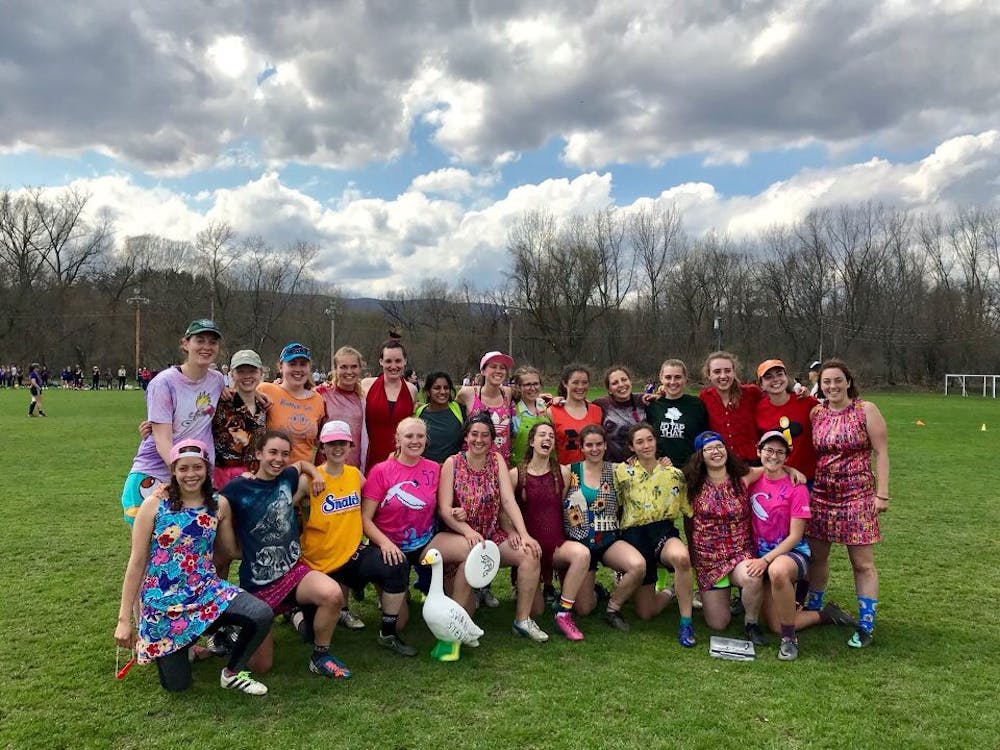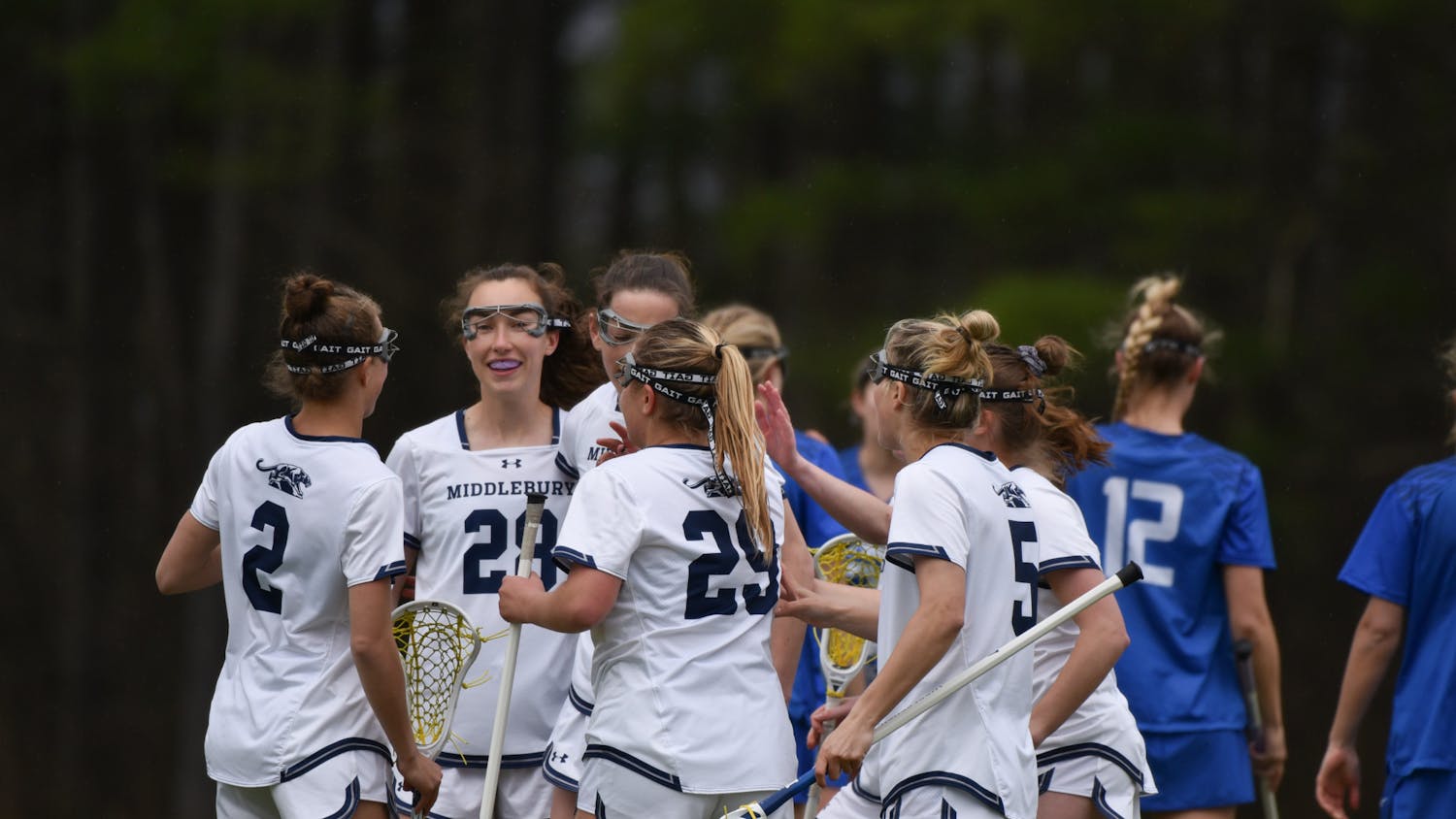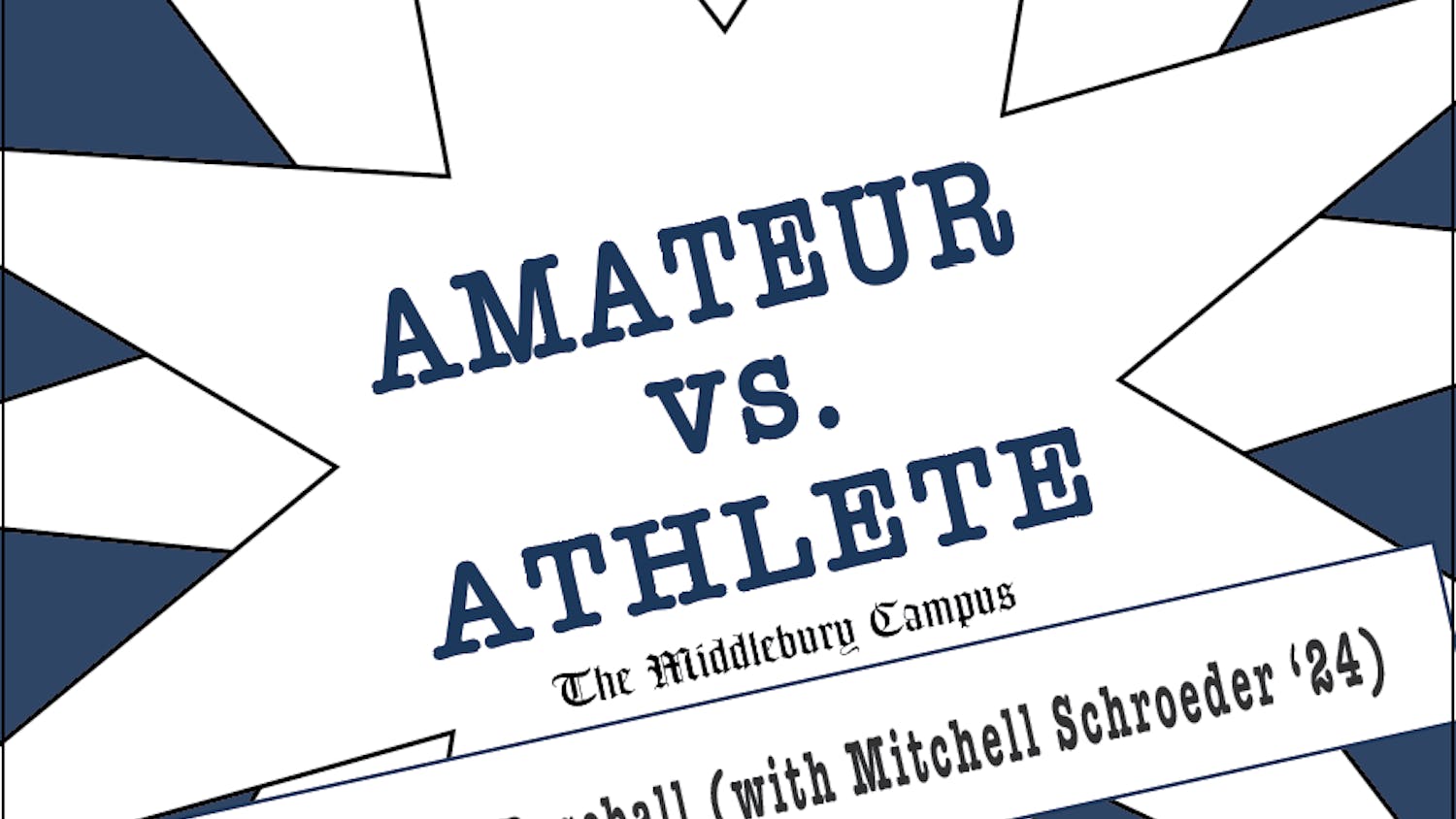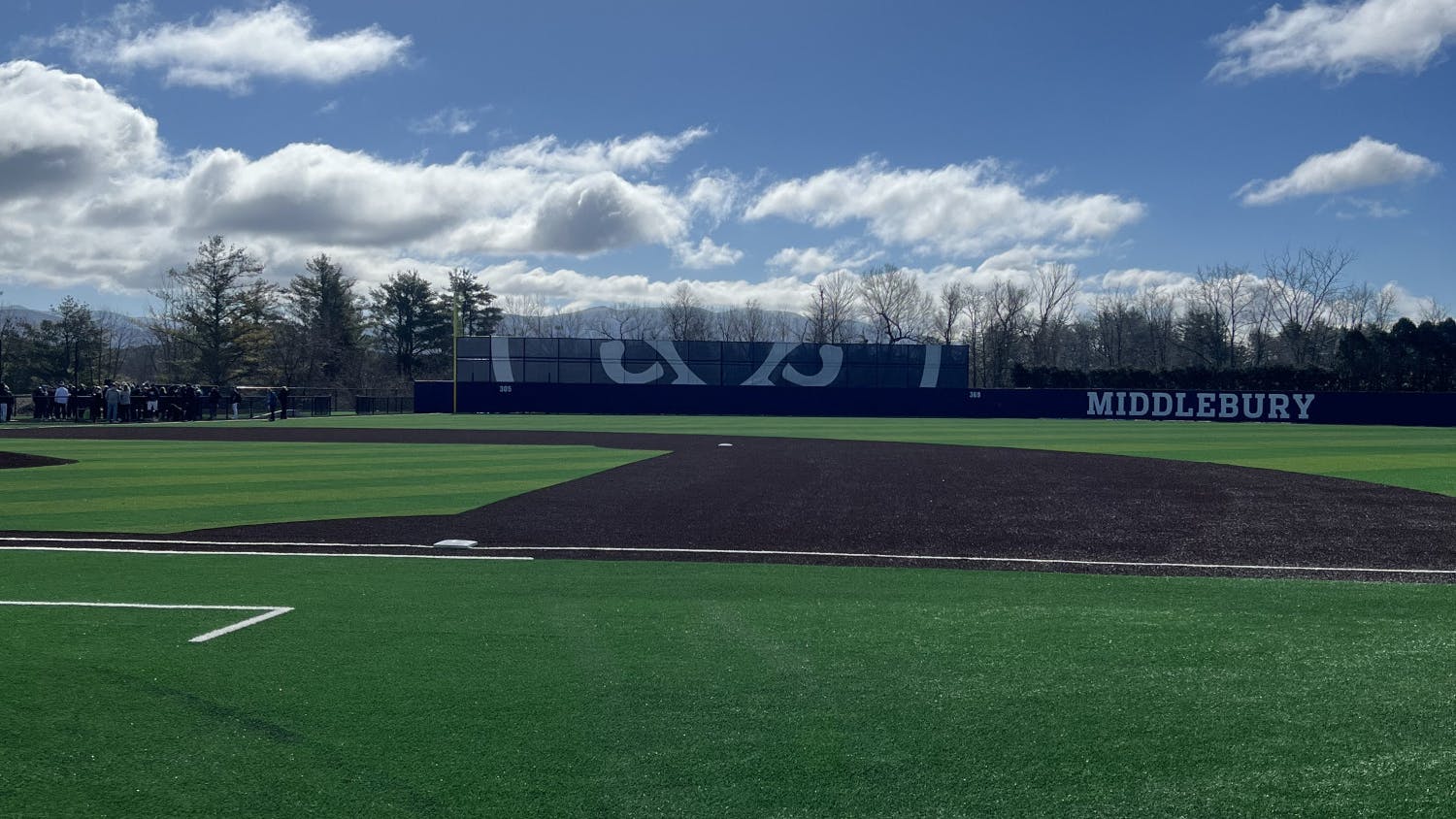Editor’s note: This piece was written for a longform sports journalism course in Winter Term 2019. The Campus is publishing it due to its relevance in today’s politicized climate. The author supplemented research and interviews with past and present Middlebury students with her perspective as a member of the Middlebury Pranksters.
It was the day after Charles Murray visited Middlebury College, leaving in his wake a community torn apart and questioning its identity. The arrival of the author of The Bell Curve sparked campus-wide protests, as students of color braced themselves for yet another message that they didn’t belong. Many members of the college’s ultimate frisbee team, the Pranksters, had attended the protests and were now arriving at the athletic center for practice.
Miyo McGinn ’19.5, then a first-year, walked down the stairs of the Virtue Field House and sat down next to Mary Thomas, a senior captain of the women’s team. Most of the players had already moved onto the field for warm-ups, and they were alone. McGinn is half Japanese-American, so she hadn’t felt personally attacked by the events of the previous day like Thomas, who is half-black. Sitting there, off to the side, both felt isolated from their team. Looking around, McGinn thought, “I don’t feel like they understand how tired I am right now, and I don’t feel like they understand how deeply, deeply hurt I am right now.”
While others set the turmoil aside in order to practice, McGinn and Thomas stayed where they were, coming to the harsh realization that their teammates and friends could not grasp the pain they were in. “We kinda just started putting on our cleats and never got past that,” Thomas said.
Ultimate was first introduced in 1968 and has yet to become as institutionalized or bureaucratic as it does not have the extent of sponsorship, advertising or oversight from an officiating body like other popular American sports. Instead, frisbee has carried the countercultural attitude of its first decade into the 21st century. At its essence is “Spirit of the Game,” the idea of spirited sportsmanship that places the responsibility of fair play and respect on each player, with players self-officiating games even at the highest level. Across the nation, ultimate communities pride themselves on being open and welcoming. And yet, students have indicated that in so many ways, despite welcoming players, the ultimate community’s structure and behavior leaves something to be desired.
McGinn didn’t realize this until her eighth year of the sport. She grew up playing in South Seattle with the All Girl Everything Ultimate Program (AGE UP), which empowers young women of color and uses ultimate to work toward social justice. To her, ultimate and social justice were inextricably intertwined. Then she came to Middlebury and joined a new ultimate community. “[That’s] when I was like oh, wow, this is the norm, where I came from is not the norm.” Suddenly, she saw that what ultimate was most intertwined with was whiteness. Holding up her hands and forming a Venn diagram, she says, “I think frisbee culture and white culture are almost entirely overlapping.” Coming to this community and to this realization, McGinn reeled. Ultimate to her had always been about social justice, and now it seemed to be purely a vehicle for socializing and drinking.
Why are those two circles in McGinn’s Venn diagram so often nearly completely overlapping? For the Middlebury Pranksters, the reasons seem endless. Spirit of the Game and self-officiating instill many in the ultimate community with the attitude that their sport as superior. The reality is that these unique aspects bring their own problems, highlighting implicit bias and inadequate cultural competency in coaches and players alike. Spirit of the Game, for example, relies on shared norms of acceptable behavior, which vary dramatically based on culture. If white players are those establishing what a foul looks like, what disrespect looks like, then whiteness is woven into the fabric of the game.
The costs of playing ultimate also present barriers, both to playing the sport and to participating in the community. Thomas remembers that new players were sometimes reluctant to go to tournaments because spending the weekend off campus was both socially and financially burdensome. Between dues for tournaments and parties, expenses become prohibitive for some. Connor Hanify, a senior who was captain of the men’s team last year, says leadership tries to reduce any barriers. They fundraise to be able to subsidize whatever individuals can’t afford. “We always say come talk to us if there’s a problem,” he says, “but it’s not easy doing that.”
Divya Gudur, a sophomore on the team, says there’s another dimension that adds to a feeling of inaccessibility. The team has frequent parties, but “if you’re on financial aid you start counting every day the amount of money your parents are spending,” she says. It makes it hard to justify participating in the party culture of the team. McGinn feels similarly: as a student who’s taking out loans and whose mom is working two jobs, all just so that she can get this education, she feels like she can’t afford to indulge in the ways other students with a safety net can. And if you’re not at social gatherings, it’s hard to be as integrated. This of course can apply to anyone, regardless of race, but it’s frequently an obstacle for students of color who often don’t feel like they can take the same liberties as their peers.
You can find binge drinking on any college sports team at Middlebury. But ultimate culture isn’t just a drinking culture. It’s a culture of weirdness. Miles McQueen, a junior who no longer plays but remains what’s known as a “social member,” remembers his first frisbee party vividly. Thomas came up to him, and said, “Ok, here’s a shot of vodka,” extending one hand. “And here’s a carrot,” she added, extending the other. So the two did a shot and chased it by eating a carrot.
McQueen was both bewildered and amused at the time, but recognizes that some of this weirdness can be off-putting for new players. Certain strange activities and traditions are specifically intended to build community, like “circle questions” at the beginning of practices, where all players stand with arms around each other and share their response to a random question of the day. A choice example used this past fall is: Would you rather fart butterflies or sneeze marbles?
Most newcomers are surprised by and maybe slightly uncomfortable with this goofiness at first, but learn to love or at least accept it. McQueen and Gudur, both people of color, take issue with the assumption that it’s just something to adjust to. “POC communities have different cultural norms than majority white communities do,” says Gudur. “I think the quirkiness sometimes doesn’t fit into POC culture.” If we already stand out, she says, why would we want to draw more attention to ourselves?
Students of color are hyper-visible at Middlebury regardless of their behavior, so “Already being at Middlebury is pushing,” says McQueen. His freshman year when the team did its bi-annual “naked run,” a nighttime streak through the library during finals week, he knew he wouldn’t have the privilege of anonymity from wearing a mask. “Being the only black guy on the frisbee team, I just did not want to do that,” he said. For this reason, the team didn’t wear masks this year during its fall semester run.
But there’s an important element that McQueen and Gudur come back to over and over again. Gudur says she has always felt incredibly welcome on the team, and McQueen acknowledges that while he was in a very white space, that the team’s unfailing openness and acceptance was what made him feel comfortable from the start. Neither feels that they have been treated differently on or off the field because of the color of their skin. McQueen looks back on his freshman year and notes how many genuine people he met who to this day he considers cherished friends.
Hanify was also surprised by and grateful for the community he discovered when he became a part the team. He joined simply to play the sport he loved, but says, “The unique culture we had made it an amazing experience and challenged a lot of beliefs I had.” In many ways, he says, the team is diverse. The variety of opinions, identities, and sexualities represented on the team along with the open and trusting nature of the community has taught him to think differently.
It makes it easy for him to wonder: maybe ultimate is just white because it’s a new sport that originated in places of privilege. Maybe it just hasn’t spread to other places yet and become pervasive across race and class divides like more popular American sports. Maybe it just takes time.
But when Thomas recalls her reaction in the aftermath of Murray’s visit, it’s impossible to deny that something more is at play. That day when she and McGinn sat on the side while watching their teammates play, she admits she may have jumped to conclusions about others’ ability to empathize. She had already decided “there are just things that I don’t talk about with people on the frisbee team.” When her teammates became her primary friend group, she extended this logic: “here at Middlebury there are just things that I don’t talk about and no one else will be able to relate to.”
Why didn’t she at least give her teammates a chance to prove her wrong? Because the year before, she had already seen what they would do with such a chance. A series of racist op-eds in The Campus caused an alarmed Black Student Union to join several other cultural organizations in writing a lengthy open letter to students. A player who was abroad at the time constructed a “Reader’s Digest” of the message, and sent it to the team. She urged everyone to read it in case they hadn’t had the chance to read the longer letter, and to think seriously about the issues in their community. It was an eloquent and compassionate email, recalls Thomas.
Immediately, a captain on the men’s team wrote back: he scolded the individual for inappropriate usage of the email list, and for not clearing the message with captains first. “This was my pivot point with my relationship with the Pranksters around race,” says Thomas. She thought, “Holy sh*t,these people I’ve been captaining with and friends with really don’t value the things that I value and don’t see racial justice and inclusion as something the Pranksters need to be dealing with.”
Thomas has thought a lot about what happened. “Spirit of the Game absolves people of their need for self reflection,” she says, and that plays out at Middlebury. She loved the weird culture and fully participated in it. But, she adds, “I’ve seen that operate as a shield against criticism … like, ‘oh, we’re just these fringe weirdoes, we can’t possibly be the oppressor.’”
There’s a clear dichotomy between how the ultimate community presents itself — as fun loving and accepting — and how certain members perceive and interact with the community. If the Pranksters want to be what they say they are, there’s work to be done.
But McGinn isn’t sure this is the take-home. “Is what communities of color need ultimate frisbee?” she wonders. Speaking from a place of passion about social justice, she views making the sport equitable and diverse as of low importance. Other issues are more pressing. “Maybe we should stop police brutality or the school to prison pipeline.”
Hanify holds more hope. “The idealist in me wants to think that frisbee is a really cool thing and a way to bring people together and that Spirit of the Game lets people learn how to stand up for themselves and have a platform to speak on.”
Across the nation, individuals and groups are working to bring reality closer to aspiration. In 2017 USA Ultimate launched a Vision Tour, during which it facilitated community conversations in nearly a dozen cities. The purpose was to discuss the ultimate community’s hopes and concerns about the sport’s future, and the first topic listed on the agenda was equity and diversity.
Change at the national level will be hard and take time. But in the meantime, Thomas sees hope in specific communities. “Individual teams can make little oases of inclusivity,” she says. “That’s my dream.”




